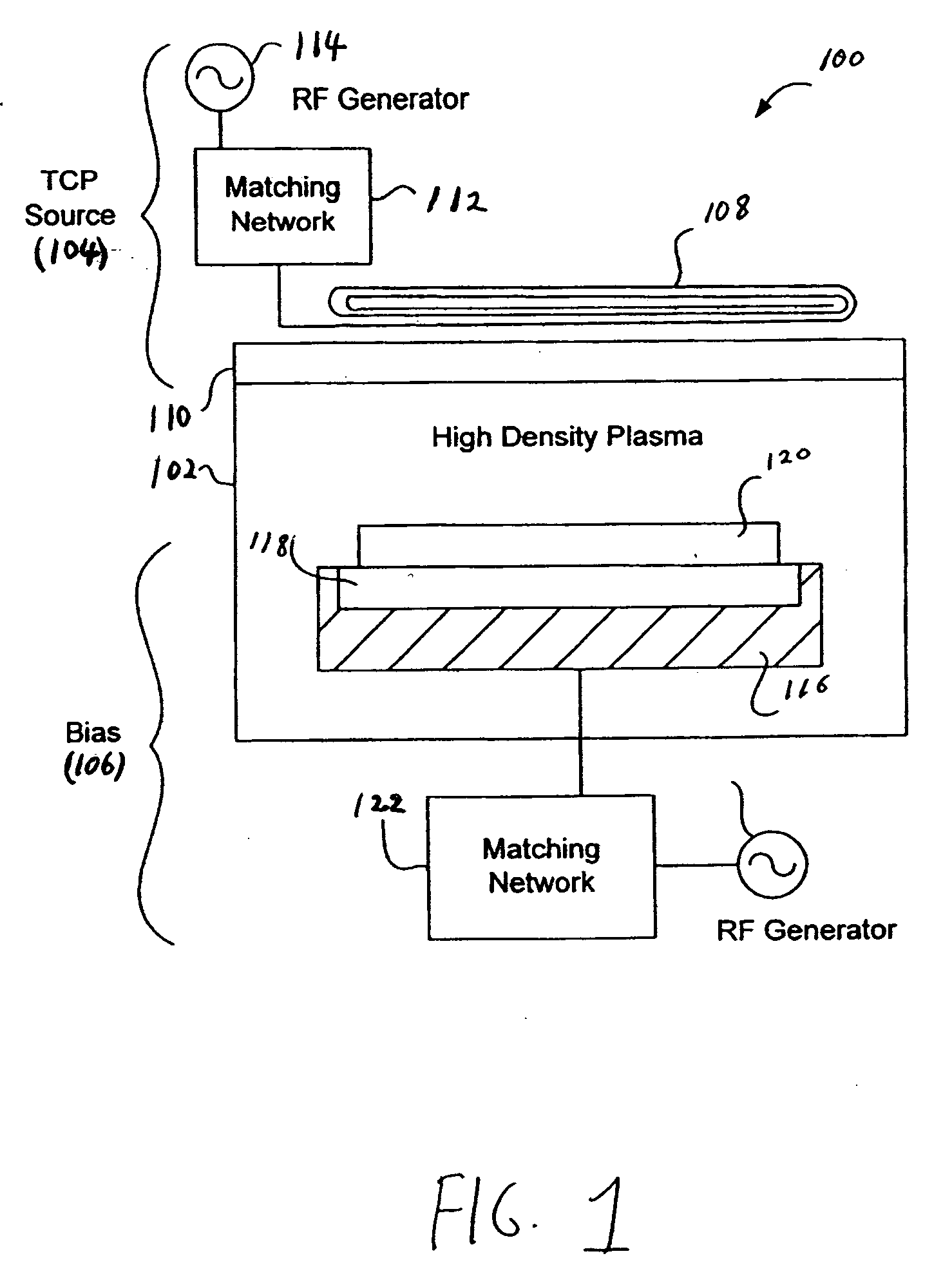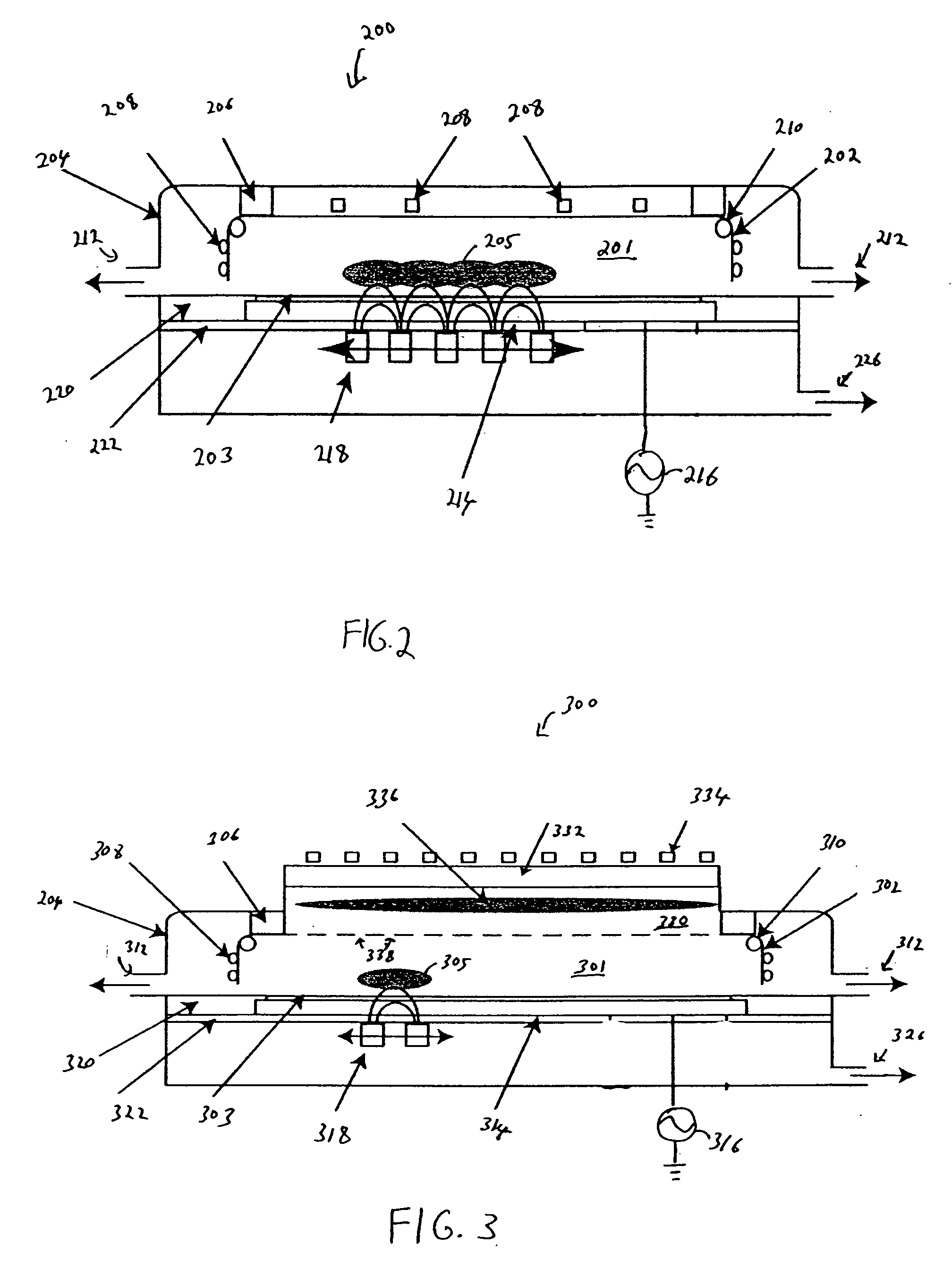Large surface area dry etcher
a technology of dry etching and large surface area, which is applied in the direction of electrical equipment, decorative arts, electrical discharge tubes, etc., can solve the problems of affecting the quality of etching, the quantity and toxicity of wet chemicals used, and the underlying materials are attacked by wet chlorine-based etches. , to achieve the effect of reducing plasma/wall interactions and/or heating of substrates, preventing back-streaming, and reducing the deposition of etching
- Summary
- Abstract
- Description
- Claims
- Application Information
AI Technical Summary
Benefits of technology
Problems solved by technology
Method used
Image
Examples
Embodiment Construction
[0021] The present invention relates to a dry etcher and methods for etching materials using the etcher. The dry etcher may be a high density plasma etcher and may be used to etch various materials including metal and dielectrics and may also be used to etch films or materials on a large surface area, e.g., flat panels. In one embodiment, a dry etcher is configured to maintain a high process chamber temperature (or inner wall temperature) during etch process to reduce byproduct deposition on the wall. In another embodiment, a dry etcher is configured to etch using one or more magnetrons that are provided in close proximity to a substrate. The magnetron is scanned across the substrate to etch the desired areas of the substrate. The scanning magnetron can be used to effectively etch a substrate having a large surface area. As used herein, the term “on” is used broadly to include the meaning of both “overlying and in contact with a referenced object” and “overlying but not in direct co...
PUM
| Property | Measurement | Unit |
|---|---|---|
| temperature | aaaaa | aaaaa |
| pressure | aaaaa | aaaaa |
| magnetic field | aaaaa | aaaaa |
Abstract
Description
Claims
Application Information
 Login to View More
Login to View More - R&D
- Intellectual Property
- Life Sciences
- Materials
- Tech Scout
- Unparalleled Data Quality
- Higher Quality Content
- 60% Fewer Hallucinations
Browse by: Latest US Patents, China's latest patents, Technical Efficacy Thesaurus, Application Domain, Technology Topic, Popular Technical Reports.
© 2025 PatSnap. All rights reserved.Legal|Privacy policy|Modern Slavery Act Transparency Statement|Sitemap|About US| Contact US: help@patsnap.com


